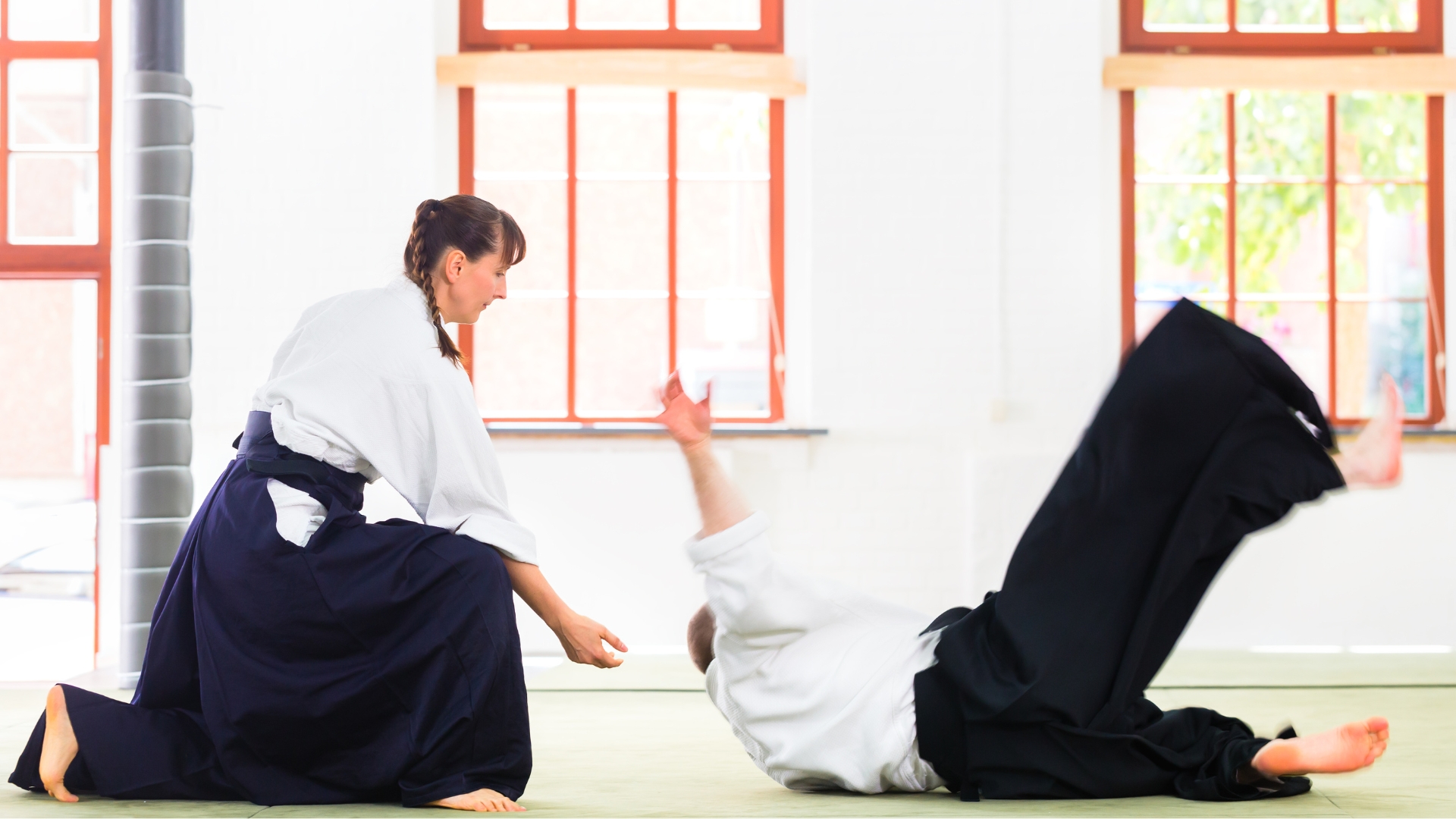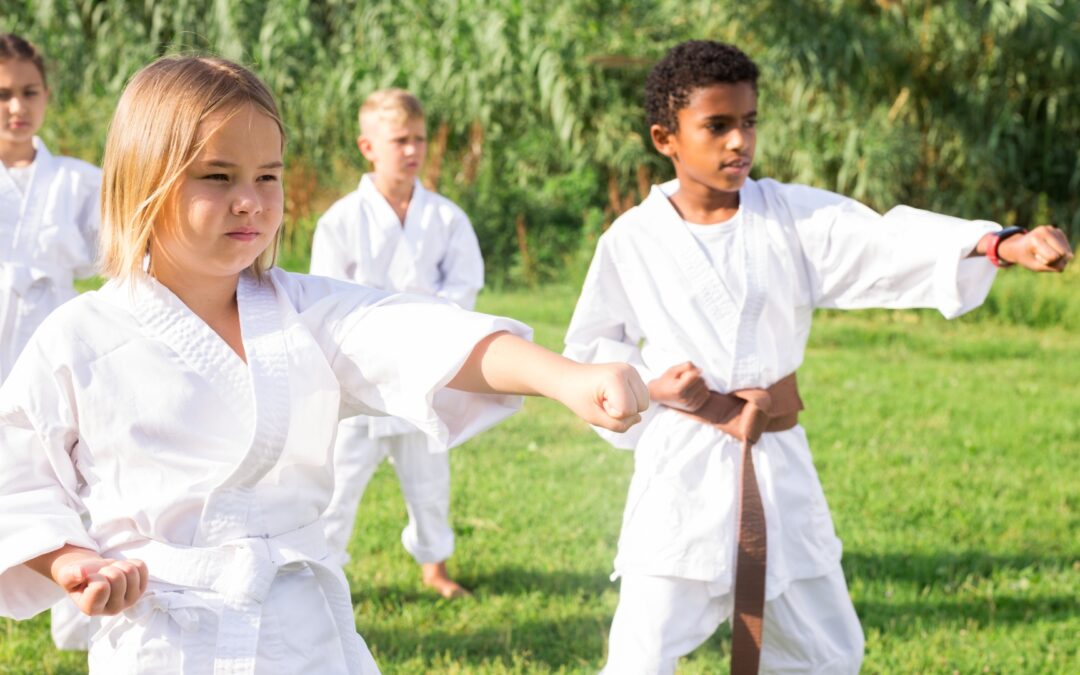Hapkido vs. Aikido: Understanding the Contrasts and Similarities
Comparing Hapkido vs. Aikido showcases these distinct yet interconnected practices, each of which bears unique philosophies and techniques. While sharing some similarities, these disciplines diverge in their principles, applications, and origins. So today, we’ll delve into the core elements that differentiate and unify Hapkido and Aikido.

1. Origins and Philosophical Foundations
Originating in Korea, Hapkido combines elements of Japanese martial arts, incorporating strikes, joint locks, and throws. Its emphasis lies in self-defense techniques and practical applications for real-life situations. Whereas Aikido, a Japanese martial art, was founded by Morihei Ueshiba. Sensei Ueshiba wanted to focus on redirecting an opponent’s energy and utilizing joint locks and throws without inflicting injury.
While both disciplines emphasize defense and harmony, Hapkido leans toward practicality, while Aikido prioritizes non-violent conflict resolution and personal development.
2. Techniques and Practical Applications
In terms of techniques, Hapkido encompasses a broader spectrum, including strikes, kicks, and aggressive counterattacks. Its arsenal involves a combination of both hard and soft techniques for offense and defense.
Aikido, on the other hand, revolves around fluid circular movements and redirects an attacker’s energy, emphasizing blending and redirection over forceful confrontation. While both disciplines share joint manipulation and throws, Aikido’s emphasis on flowing movements contrasts with Hapkido’s inclusion of striking techniques.
3. Training Methods and Focus
Hapkido’s training often incorporates rigorous physical conditioning, focusing on developing strength, speed, and agility. The curriculum includes scenario-based training to prepare practitioners for real-world confrontations.
However, Aikido’s training emphasizes harmony, balance, and coordination, often incorporating meditation and breathing exercises to cultivate a centered and focused mind. The focus is on achieving a state of continued inner peace by utilizing an opponent’s energy rather than resisting it.
4. Belt Systems and Organizational Structures
Hapkido typically follows a belt system similar to Taekwondo’s, with colored belts signifying different proficiency levels. Various Hapkido dojos may have distinct belt structures. Aikido, in contrast, often uses a more simplistic ranking system, consisting of fewer belt levels or subtle distinctions between beginner and advanced practitioners. Organizational structures and teaching methodologies in both disciplines can vary significantly based on schools and affiliations.
5. Practicality vs. Spiritual Harmony
A distinguishing factor between Hapkido and Aikido lies in their emphasis on practicality versus spiritual harmony. Hapkido, with its focus on practical self-defense techniques, aims for efficient and swift responses in combat scenarios.
In contrast, Aikido places greater importance on the spiritual aspect, seeking harmony and non-violent conflict resolution. While both arts possess self-defense elements, Hapkido leans toward real-world applicability, whereas Aikido emphasizes the cultivation of a peaceful and centered mindset, reflecting the dichotomy between immediate effectiveness and spiritual growth in martial arts practice.
6. Adaptability and Personal Expression
Another aspect worth considering is the degree of adaptability and personal expression within Hapkido and Aikido. Hapkido, characterized by its diverse range of techniques, allows practitioners to tailor their style to suit individual strengths and preferences. This adaptability often leads to variations in execution among practitioners.
Conversely, Aikido, with its emphasis on flowing movements and harmonizing with an opponent’s energy, promotes a more standardized form across practitioners, focusing on mastering set techniques rather than personalized variations. This distinction sheds light on how these styles accommodate individuality and self-expression, contributing to the diversity and richness of martial arts.
Hapkido vs Aikido Isn’t a Touch Choice
Hapkido and Aikido, while stemming from different cultural backgrounds and having distinct approaches, share common threads of self-defense, harmony, and disciplined practice. Understanding their contrasts in origin, techniques, training methodologies, and organizational structures enriches our appreciation for these martial arts.
At Aikido of Nebraska, we honor the diverse facets of martial arts by encouraging learning, discipline, and respect within our dojo and beyond. Whether your path leads to Hapkido, Aikido, or beyond, embrace your martial arts journey by recognizing their differences and shared values.

Finding Your Fit: Exploring Unique Martial Arts Styles for Your Kids
Choosing the right martial arts styles for your child is like finding the perfect puzzle piece—it...

How Our Kids Can Learn Nonviolent Resistance Through Aikido
In a world that often feels chaotic and uncontrolled, instilling values of peace and nonviolent...

Zen Philosophy and Aikido
Aikido is more than just a martial art, as it offers a path of self-discovery and personal growth....
Visit Us!
PHONE
ADDRESS
4215 South 33rd Street
Lincoln, Nebraska 68506
Hours
Mondays Closed
Tuesday- 5:30 p.m - 8:30 p.m.
Wednesday- 6:30p.m. - 7:30p.m.
Thursday- 5:30 p.m - 8:30 p.m.
Fridays Closed
Saturday- 10 a.m. - 1 p.m.
Sundays Closed
Try a Class!
Interested in trying one of our classes? Choose your class level and schedule a trial appointment today! Discover Aikido and discover yourself!
